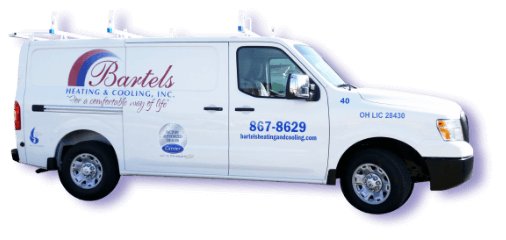Spring 2014
Allergy Relief: How to Breathe Easier in Your Home
There are certain times of the year when it seems like those of us with allergies are just doomed to be miserable. As beautiful and comfortable as spring may be, it also brings on a deluge of allergens. This can really hinder your enjoyment of the season if you have allergic reactions to pollen and other substances that come with spring. All hope is not lost, though. There are plenty of allergy medicines on the market today that can help you go along your daily business. However, you don’t want to be constantly treating the symptoms, especially when you are at home. Attacking the root of the problem is a much more effective means of breathing easier in your house. Here are some ideas to help you reduce the effects of your allergy symptoms when at home.
First things first, a problem with seasonal allergies gives you great motivation for keeping up with housework. If you allow dust and dander to build up within your home, you can expect those pollutants to take a toll on your allergies. The longer you allow for these allergens to build up, the bigger the problem at hand. By maintaining a regular cleaning schedule, you can enjoy a more pleasant living environment while also keeping your home more presentable.
Another way to reduce the risk of aggravating allergy symptoms is to invest in a whole house air purifier. There is an air filter in your HVAC system, as you know, but the primary function of this air filter is to protect the inner components of your heating and cooling equipment. If you want to boost indoor air quality to alleviate your allergy symptoms, you may need a more efficient air filter or even an electronic air purifier. This is a very effective means by which to improve the quality of the air throughout your entire house so that you won’t suffer from severe allergy symptoms.
Also, while it may seem counterintuitive it is also important that your home be well ventilated if you want to maintain high indoor air quality. You may want to seal your home up to keep allergens out, but you also risk trapping allergens in your house by doing so, at which point they will just continuously make their way throughout your air distribution system. Plus, if you are running your heater or air conditioner, recycling that air over and over can lead to stale, low air quality. Proper ventilation is the key to comfortable living.
If you have any questions about the ways in which you can combat allergies by improving the quality of the air in your home, call an indoor air quality specialist. Some people are always going to have to medicate their allergies, especially if symptoms are severe. Supplementing such measures with these practices, however, is a great way to enjoy a cleaner, more healthful living environment. Give us a call today to get the products and services you need to breathe easier.
How you can save money by going with a higher–efficiency AC unit
Spring is here and summer is fast approaching. As you begin to tune up your AC unit to get it ready for the heat, you may also consider upgrading. The cost–effectiveness and energy efficiency of your total cooling system depends upon a lot of factors: ductwork, insulation, the layout of your home and property, including even such things as which part of your house endures the sun’s rays the longest. But, your savings in large part comes down to how efficient your air conditioning unit is.
The SEER rating is a number given to every manufactured AC system available on the market. The higher the rating, the higher the efficiency. Upgrading to an AC unit with a high SEER rating may save you money in the long run.
One of the most high–efficiency units on the market today is known as the ductless mini split air conditioner. As its name suggests, it uses no ductwork. Like central systems that use forced air through ductwork, mini splits have two primary parts: an outdoor compressor/condenser and the individual units that act as an indoor air handler. They are connected by a conduit that is installed behind the walls. They are not only known for their high–efficiency, but also for their small size and flexibility. By controlling your cooling through the use of zones, you can customize your living spaces; each zone has its own thermostat. They are also often easier to install than other conventional systems because they generally require only a 3–inch hole for the conduit. This can be especially useful when retrofitting older systems, or deciding about whether or not to install ductwork.
But even if you’d like to stick to conventional central air, there are many upgrade options. You can, for example, choose to replace only the outdoor compressor; although you should keep in mind that your system needs to be matched by an AC professional. Proper sizing and installation are also key aspects of upgrading to a high–efficiency system.
Whatever your reason of upgrading: whether to save money, help reduce your carbon footprint, or because you want better performance, your local professional technician can help you make the right decision.

